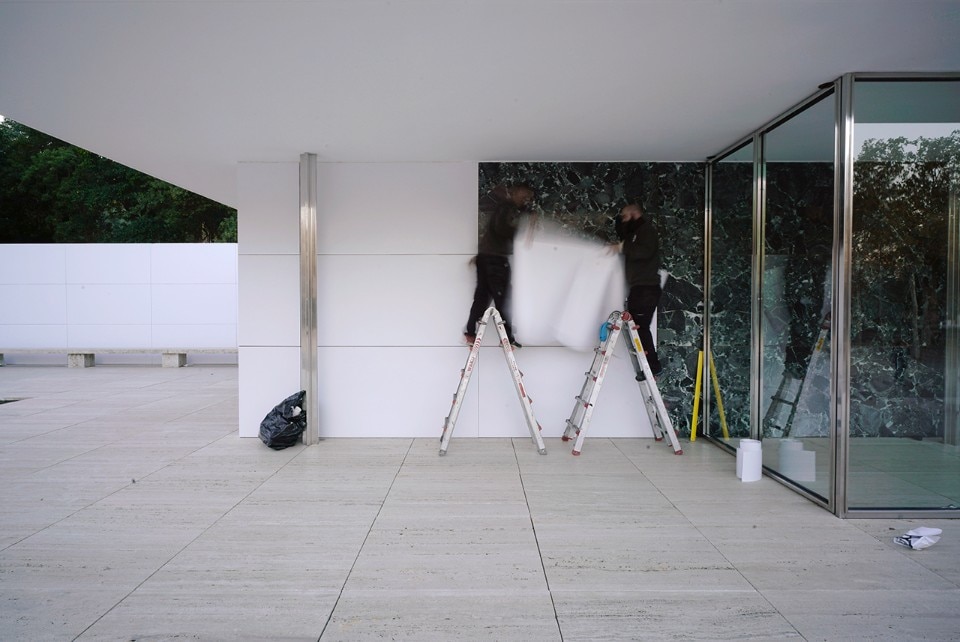
The Trafic parquet collection: a new language for spaces
Designers Marc and Paola Sadler draw on now-extinct urban scenarios to create an original and versatile product for Listone Giordano.
- Sponsored content
Seven days ago we published “Mies Missing materiality”, the temporary installation designed by Anna and Eugeni Bach, where the original surfaces in travertine Tinos marble, Vert antique marble and golden onyx of the Mies Pavillon in Barcellona have been covered with white vinyl panels.
We reported the project on our social media, and there were many comments: some open and enthusiastic, some very conservative and critical. Yet some very ‘superficial’ hate-oriented. At domusweb we discussed if it would have been better to title the article just with: “Mies Pavillon covered with white” or “The Mies Pavilion dematerialised”.
We asked the architects three simple questions around the installation, synthesizing what we found in your comments.
Why did you cover everything in white?
Whiteness has a unifying effect on the different surfaces of the Mies’ pavilion and therefore the different parts (walls, pavement, ceiling, pillars...) lose their hierarchy. The role of white is not only the representation of this loss of materiality, but also the emblem of the first epoch of the modern movement. This contradiction between white as the historiographical image of the modern movement and the role of the Barcelona Pavilion as one of the icons of this very same modernity is something that the installation wants to underline.
Is there any political meaning behind your choice? (The Pavillion was created to host Spanish monarchy... )
No, it is not the intention. The installation works on themes related to architecture, space, perception and the role of historiography in architecture. In this case the purpose of the artwork is not to underline a straight criticism or to impose an opinion, but to evoke thoughts, meanings, relations and new observations.
Someone would rather say “more is less” (visible), because technically you didn’t get rid of material, but you added some.
We have been discussing if the operation is about dressing or undressing. The conclusion is: neither. The materiality is more like overrode, allowing to observe the space in other terms. This is specially interesting, and somewhat disturbing, in this architectural masterpiece very strongly based on materiality but with plenty of other values and possible observations.

 View gallery
View gallery

Villa Steurer, a smart oasis of elegance
On Lake Garda, an exclusive villa blends refined design with Gira smart technology. Designed by Kurt Steurer, the residence boasts interiors featuring premium materials and an advanced KNX home automation system that manages lighting, climate, and security, providing a personalized and state-of-the-art living experience.
- Focus Finishes





















